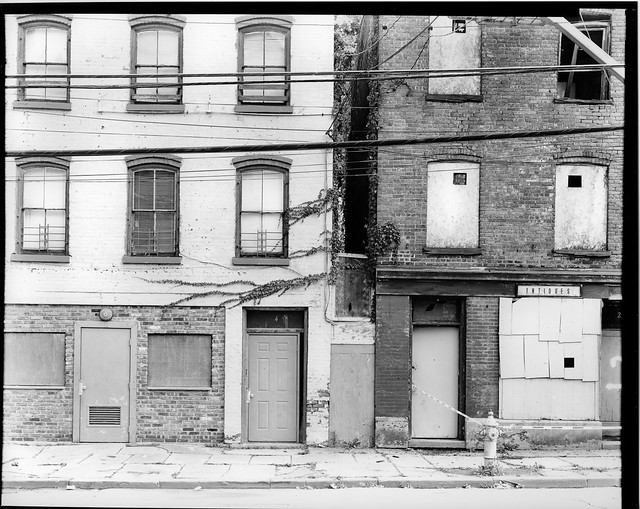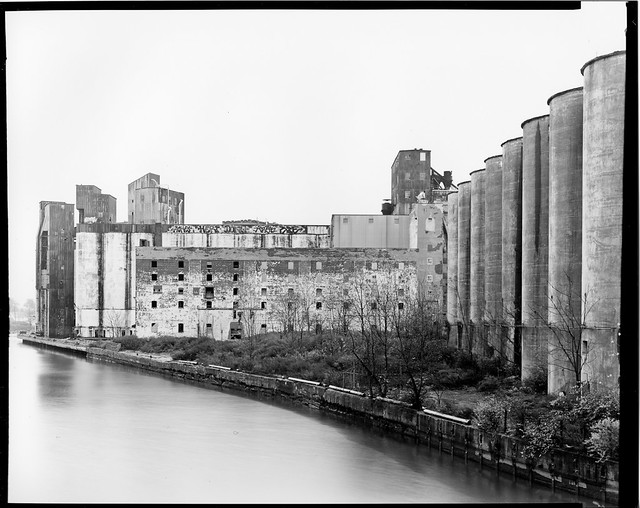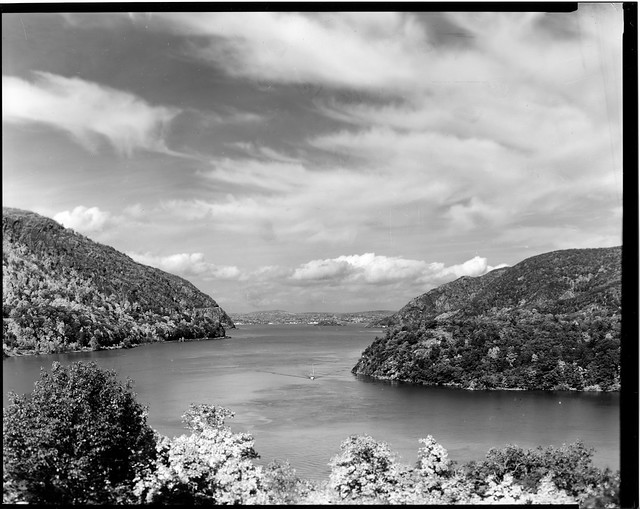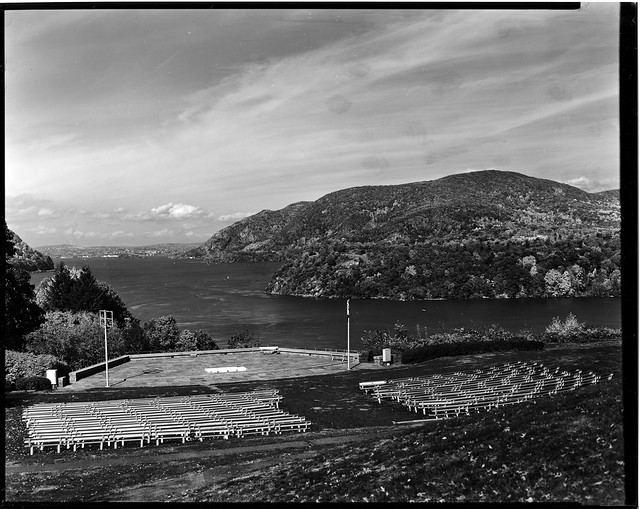The 52 Project, Week 29: 8x10 around New York
 Wednesday, March 2, 2011 at 2:09AM
Wednesday, March 2, 2011 at 2:09AM During my brief time in New York before and after my guest spot on the early November 2010 episode of the Film Photography Podcast, I had some free time to roam around some other cool places in New York and play around with the 8x10. The same as last time, these are all scans of quick and dirty contact prints on Oriental RC VC paper with very little correction in post. Click the scans for a better view plus exposure data.
 The deep downtown area of Newburg, NY, quite run down, but in a very photogenic way!
The deep downtown area of Newburg, NY, quite run down, but in a very photogenic way!
This image definitely took some "cojones" to take. I was in a VERY bad neighborhood for quite some time scoping out and setting up this image. Thankfully, I'm still around to share the urban decay of Newberg, NY with everyone. P.S. If it looks like a meth house, smells like a meth house, and has gunfire like a meth house, chances are its a meth house. >__<
Moving on.
 A very unusual view from a scenic outlook of the Hudson River and Poughkeepsie, NY. Just ignore that little "squiggly" in the corner :p
A very unusual view from a scenic outlook of the Hudson River and Poughkeepsie, NY. Just ignore that little "squiggly" in the corner :p
So just when I thought things couldn't have gotten any hairer as they had earlier that day in downtown Newburg, I got hassled not once, but twice by Poughkeepsie police about shooting with my 8x10. Apparently, having anything on a tripod that looks more menacing than a point and shoot is "against city ordinance". After explaining that I wasn't Ansel Adams or planning to score big bucks of the above image, they were a little more relaxed with my shooting; they still followed me back to my car, however. >__>
 This image helped to kick off my love affair with long exposures on the 8x10. For all you sports shooters out there, you just won't get it.
This image helped to kick off my love affair with long exposures on the 8x10. For all you sports shooters out there, you just won't get it.
No real drama with this exposure, unless of course you considering a long exposure in a heavy downpour and 45 degree weather to be a problem. For large format? Not so much. ^__^
Keeping it short and sweet, onto this week's lessons...
Something Good: Each 8x10 sheet metered very differently, but with a little Zone System came out with even density in the negative with consistent print times for the contact prints. Yay!
Somehting Bad: Hair and dust are the bane of my scanning existence, nuff said.
Something Learned: Big cameras attract lots of attention (duh), both good and bad. Know your equipment, but know your photographic environment as well. If things get sketchy, ask yourself if getting the shot is really worth that extra risk.
Next Week: The big 'ole sheets of Tmax 400 keep on coming. And even though there's not going to be any new emulsions or processes, I guarantee the subject matter will keep things fresh!


